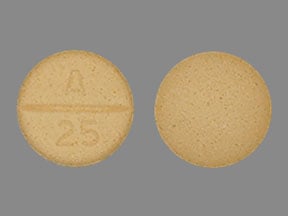
Carbidopa Coupons & Savings Card – Discount Prices from $149.22
Generic for: Lodosyn
My prescription
Edit
25MG, Carbidopa (270 Tablets)
Select pharmacy

CVS
$149.22
COUPON PRICE
Walgreens
$207.54
COUPON PRICE
Walmart
$350.47
COUPON PRICE
Albertsons
$439.82
COUPON PRICECarbidopa savings card
Show this card to your pharmacist
CVS
$149.22
BIN
ID
PCN
GRP
019876
LH2251C389
CHIPPO
LHX
Powered by
More prescriptions for Parkinson's disease
More prescriptions for Parkinson's disease
Carbidopa Anhydrous (Carbidopa) dosage forms
Dosage Quantity Price from Per unit 25MG 270 Tablets $149.22 $0.55 25MG 100 Tablets $66.60 $0.67
| Dosage | Quantity | Price from | Per unit |
|---|---|---|---|
| 25MG | 270 Tablets | $149.22 | $0.55 |
| 25MG | 100 Tablets | $66.60 | $0.67 |
Carbidopa Warnings
This safety information is crucial for anyone considering or currently using this medication. It outlines potential risks, necessary precautions, and guidance on specific situations. Please review this information thoroughly and consult your healthcare provider if you have any questions or concerns.
Drowsiness and Sudden Sleep Episodes: Medications containing carbidopa and levodopa may cause unexpected sleepiness or sudden sleep episodes. To ensure safety, do not drive or engage in activities requiring full attention until you understand how the medication affects you. This is especially important if you have a history of drowsiness or sleep disorders or are taking sedatives. Inform your healthcare provider if you experience excessive sleepiness.
Neuroleptic Malignant Syndrome-like Symptoms: Abruptly stopping or reducing levodopa can lead to high fever and confusion, akin to neuroleptic malignant syndrome (NMS). Since carbidopa is often used with levodopa, be vigilant for these symptoms when changing doses.
Impulsive Behavior: This medication can lead to impulsive behaviors such as increased sexual urges, gambling, excessive spending, or binge eating. If these behaviors adversely affect your life, discuss them with your healthcare provider. Your provider might need to adjust your dosage or discontinue the medication.
Hallucinations and Behavioral Changes: Carbidopa and dopamine-enhancing medications can induce hallucinations, paranoia, delusions, and changes in behavior and thinking. These symptoms typically appear soon after starting the medication and may subside with dose adjustment. Be cautious if you have a history of mental health issues, as some mental health drugs may exacerbate Parkinson's symptoms and affect this medication's efficacy.
Depression and Suicidal Thoughts: Depression and suicidal thoughts have been reported in patients taking carbidopa and levodopa. Seek immediate medical attention if you or others notice signs of depression or suicidal behavior, especially if there is a history of depression.
Increased Risk of Skin Cancer: Patients with Parkinson's disease face a higher risk of skin cancer. Regularly check for new or changing skin growths, and inform your healthcare provider of any such changes. They may recommend periodic skin evaluations.
Contraindications: Avoid using levodopa or medications containing carbidopa/levodopa if you are taking nonselective monoamine oxidase inhibitors (MAOIs) or have narrow-angle glaucoma. Consult your healthcare provider for guidance if these conditions apply to you.
Carbidopa Side Effects
Common side effects:
- Dyskinesia
- Dystonia
- Nausea
Less common but important to monitor:
- Psychotic behavior
- Delusions
- Hallucinations
- Paranoia
- Depression
- Suicidal tendencies
- Dementia
- Seizures
- Changes in the color of saliva, sweat, or urine
Serious side effects:
- Neuroleptic malignant syndrome (nms)
- Confusion
- Very high fevers
- Irregular pulse
- Excessive sweating
- Muscle stiffness
- Changes in blood pressure
Carbidopa Interactions
Carbidopa, commonly prescribed alongside Levodopa for Parkinson's disease, can interact with various medications and substances, potentially affecting its efficacy or leading to adverse effects. It's essential to be aware of these interactions to manage treatment effectively.
Antihypertensive Medications: Combining carbidopa with blood pressure-lowering drugs may enhance their effects, increasing the risk of low blood pressure (hypotension). Patients should be monitored for signs of hypotension, and adjustments to the antihypertensive dosage may be necessary when initiating carbidopa therapy.
Monoamine Oxidase Inhibitors (MAOIs): Concurrent use of carbidopa with non-selective MAOIs is contraindicated due to the risk of hypertensive crises. A minimum of two weeks should elapse between discontinuing an MAOI and starting carbidopa treatment.
Iron Supplements: Iron can bind to carbidopa and levodopa in the gastrointestinal tract, reducing their absorption and effectiveness. To minimize this interaction, it's advisable to separate the intake of iron supplements and carbidopa by at least two hours.
Antipsychotic Medications: Drugs such as Haloperidol and Risperidone may diminish the therapeutic effects of carbidopa by blocking dopamine receptors. Patients should be observed for a potential reduction in Parkinson's symptom control when these medications are used concurrently.
Tricyclic Antidepressants: The combination of tricyclic antidepressants with carbidopa has been associated with rare instances of hypertension and involuntary movements (dyskinesia). Caution is advised when these medications are prescribed together.
Vitamin B6 (Pyridoxine): High doses of vitamin B6 can interfere with levodopa's effectiveness. However, this interaction is not significant when carbidopa is administered alongside levodopa, as carbidopa prevents the breakdown of levodopa influenced by vitamin B6.
Protein-Rich Foods: High-protein diets may affect the absorption of levodopa, potentially reducing its efficacy. Patients are often advised to monitor their protein intake and discuss dietary considerations with their healthcare provider.
Other Medications: Certain drugs, including Phenytoin and Metoclopramide, may interfere with the therapeutic effects of carbidopa and levodopa. Patients should be closely monitored for any loss of symptom control when these medications are used concurrently.
Given the potential for these interactions, it's crucial for patients to inform their healthcare providers about all medications, supplements, and dietary habits to ensure safe and effective management of Parkinson's disease.
